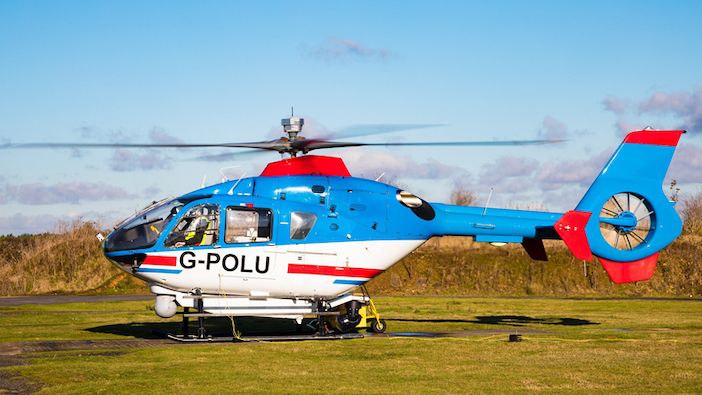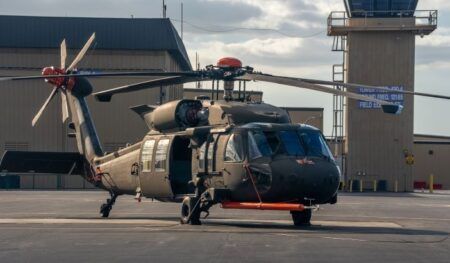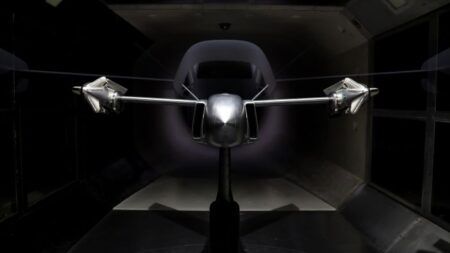Airbus Helicopters in the UK is exploring future activities to follow on from a four-year research project that developed ways to measure deformation in helicopter rotor blades.
The BladeSense project, a £2 million ($US2.4 million) program supported with a £1 million (US$1.2 million) grant from the UK government, examined the use of novel optical fiber sensors that measure strain and shape and monitor blade behaviour in real-time.
The results of the project could lead to substantial savings on lifecycle costs for helicopters through continuous in-flight data collection. This will not only open up new pathways for rotor blade performance monitoring, but also provide blade usage data that is currently impossible to obtain in operational environments.
During the project, the rotor blades of an Airbus H135 helicopter were fitted with fiber optic instrumentation. Data was successfully transferred to a remote ground station through a wifi link from instrumentation mounted on top of the rotor hub, during some four hours of ground running with the 5m rotors operating at up to 400rpm.
The research was a collaboration between Airbus Helicopters UK and Cranfield University’s Dynamics, Simulation and Control group and Centre for Engineering Photonics.
Simone Weber, technology integration manager at Airbus Helicopters in the UK was embedded at Cranfield University. Helitune of Torrington, UK provided an on-board vehicle monitoring unit, and fluid engineering specialists BHR Group (UK) of Cranfield supplied the mathematical model predicting the mechanical loads.
Researchers are now considering flight-testing the system and investigating how to exploit the concept in the helicopter design phase.
Head of design and customisation at Airbus Helicopters in the UK, Richard Atack said, “We’ve made real progress in an advanced field of work with the potential to bring important benefits in terms of performance monitoring and environmental impact. We’ve done that by capitalizing on people, skills and technical know-how at Airbus and with our partners. Now we are very interested to see what we can do next to advance our capabilities even further.”
Dr Mudassir Lone, senior lecturer in flight dynamics in the Dynamics, Simulation and Control Group at Cranfield University said, “The success of the final series of tests reflects the ability of the UK R&D environment to deliver unique and industrially relevant research, due to the close collaboration in both the available expertise and facilities.”
Professor Ralph Tatam, head of the Centre for Engineering Photonics at Cranfield University added, “This demonstrates that interferometric fiber optic shape measurement, pioneered at Cranfield, works in this challenging environment and opens the way for this technology to be applied across a range of sectors including aerospace, energy, transport and healthcare.”





